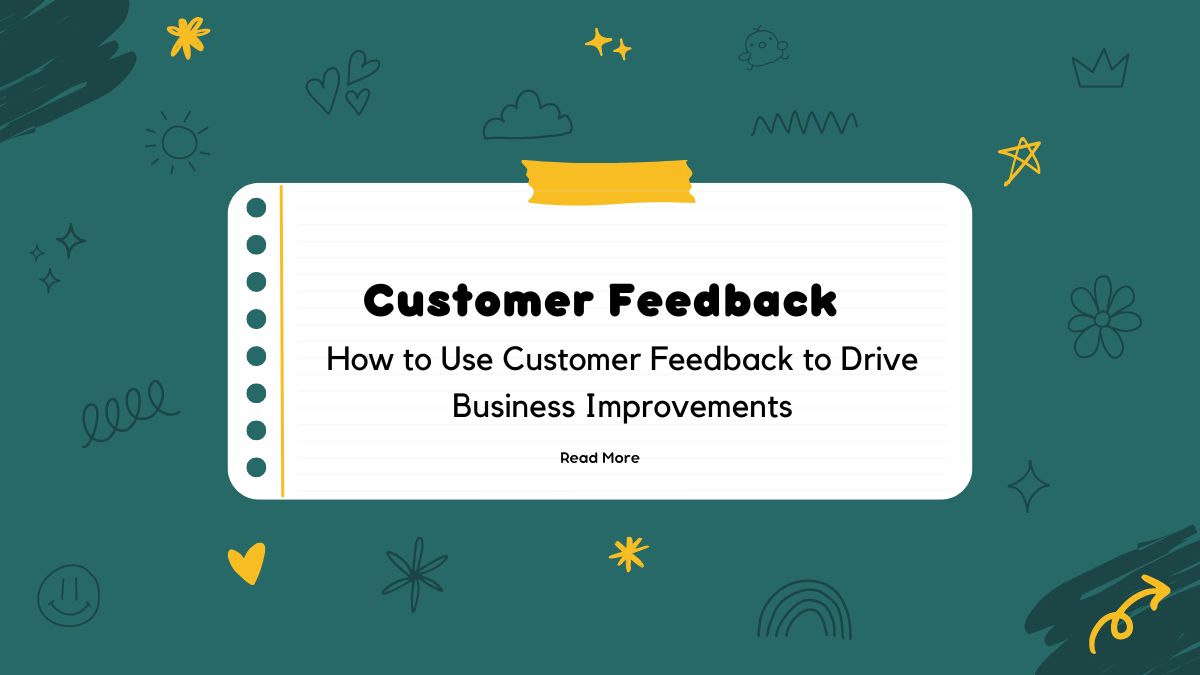
Customer feedback is crucial for companies to enhance products and services. It helps businesses stay competitive and improve customer experiences. By listening to and acting on feedback, businesses can make data-driven decisions. These decisions lead to happier customers, more loyalty, and better financial performance. In this guide, we will explore how to use customer feedback well. We will cover how to collect feedback, analyze data, make changes, and measure success.
Why Customer Feedback is Crucial
Customer feedback gives direct insights. It shows what customers think about your products or services. It reveals both strengths and areas for improvement. Here are some reasons why leveraging customer feedback is essential:
- Identifies Customer Needs: Understanding what customers want and need helps tailor products and services to meet their expectations.
- Improves Customer Satisfaction: Addressing feedback demonstrates that you value your customers’ opinions, leading to higher satisfaction and loyalty.
- Drives Innovation: Feedback can inspire new ideas and innovations that keep your business competitive.
- Enhances Brand Reputation: Responding to feedback positively can boost your brand’s image and build trust with your audience.
- Reduces Churn: By resolving issues highlighted by feedback, you can reduce customer churn and retain more customers.
Collecting Customer Feedback
The first step in using customer feedback for business improvements is to collect it systematically. There are various methods to gather feedback, each with its own benefits:
1. Surveys and Questionnaires
Surveys are a popular and effective way to collect structured feedback. Use tools like SurveyMonkey, Google Forms, or Typeform to create surveys. Ensure your surveys are:
- Short and Focused: Keep surveys concise to increase completion rates.
- Relevant: Ask questions that are directly related to the customer’s experience with your product or service.
- Balanced: Use a mix of open-ended and closed-ended questions to get both quantitative and qualitative data.
2. Customer Interviews
One-on-one interviews with customers can provide deeper insights. They reveal their experiences and opinions. Interviews allow for more detailed discussions. They can uncover valuable insights that surveys might miss.
3. Online Reviews and Social Media
Monitor online reviews and social media platforms for feedback. Websites like Yelp and Google Reviews have unsolicited customer feedback. Social media channels like Twitter and Facebook are also rich sources.
4. Feedback Forms on Your Website
Put feedback forms on your website. This lets customers easily share their thoughts. Pop-up forms, contact forms, and dedicated feedback pages can be effective tools.
5. Customer Support Interactions
Analyze interactions with your customer support team. Support tickets, chat logs, and call transcripts can reveal recurring issues and areas for improvement.
Analyzing Customer Feedback
Once you have feedback, the next step is to analyze it. Look for patterns, trends, and actionable insights. Here’s how to approach the analysis:
1. Categorize Feedback
Group feedback into categories based on common themes. For example, you might have categories. These could be things like product quality, customer service, pricing, and website usability. Categorizing feedback helps in identifying recurring issues.
2. Quantify Feedback
For quantitative data, use statistical methods to identify trends. Calculate metrics. These include Net Promoter Score (NPS). They also include Customer Satisfaction Score (CSAT) and Customer Effort Score (CES). They gauge satisfaction and loyalty.
3. Identify Common Pain Points
Look for common pain points and areas where customers are consistently expressing dissatisfaction. These pain points are critical areas for improvement.
4. Highlight Positive Feedback
Identify what customers love about your products or services. Highlighting positive feedback can help reinforce successful strategies and practices.
5. Use Sentiment Analysis
Use sentiment analysis tools to automatically analyze the tone of customer feedback. These tools can help you quickly gauge whether feedback is positive, negative, or neutral.
Implementing Changes Based on Feedback
After analyzing the feedback, the next step is to implement changes that address the identified issues and improve your business. Here’s a structured approach:
1. Prioritize Actions
Not all feedback will be equally important. Prioritize actions based on the impact and feasibility of the changes. Focus on high-impact areas that will significantly improve customer satisfaction.
2. Develop an Action Plan
Create a detailed action plan. It should outline the changes, the teams or people responsible, the timelines, and the expected outcomes. An action plan ensures that everyone is aligned and accountable.
3. Communicate Changes to Customers
Inform your customers about the changes you are making based on their feedback. Transparency builds trust and shows customers that you value their input. Use email newsletters, blog posts, and social media updates to communicate these changes.
4. Train Your Team
Ensure that your team is well-trained and prepared to implement the changes. Provide training sessions, resources, and support to help them adapt to new processes or tools.
5. Monitor Progress and Adjust
Regularly monitor the progress of the implemented changes. Collect new feedback to assess whether the changes have had the desired effect. Be prepared to make further adjustments as needed.
Measuring Success
To determine the effectiveness of your efforts, it’s crucial to measure the impact of the changes you’ve made. Here are some key metrics to track:
1. Customer Satisfaction Scores
Measure changes in your NPS, CSAT, and CES scores to gauge overall customer satisfaction and loyalty.
2. Customer Retention Rates
Track customer retention rates to see if there is an improvement in customer loyalty and reduced churn.
3. Feedback Volume and Sentiment
Monitor the volume and sentiment of new feedback. Less negative feedback and more positive feedback are good signs of success.
4. Business Performance Metrics
Look at business performance metrics such as sales, revenue, and conversion rates. Positive changes in these metrics can be attributed to improved customer satisfaction.
5. Employee Feedback
Ask your employees for feedback. Understand how the changes affected their workflows and job satisfaction. Engaged and satisfied employees are more likely to provide better customer service.
Conclusion
Customer feedback is a powerful tool for driving business improvements. Businesses can collect feedback. They can analyze and act on it. This helps them make informed decisions. These decisions enhance customer satisfaction, foster loyalty, and improve performance. The key to success is not just listening to your customers. It’s also showing them that their voices matter by making real improvements. An effective feedback loop will ensure that your business evolves. It will help it meet the ever-changing needs of your customers.




